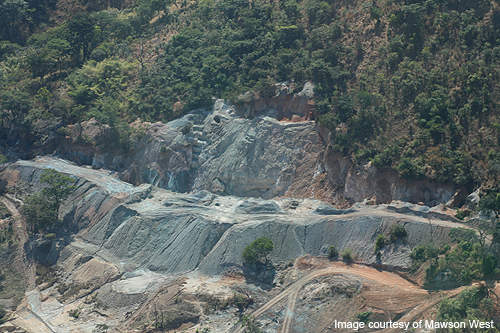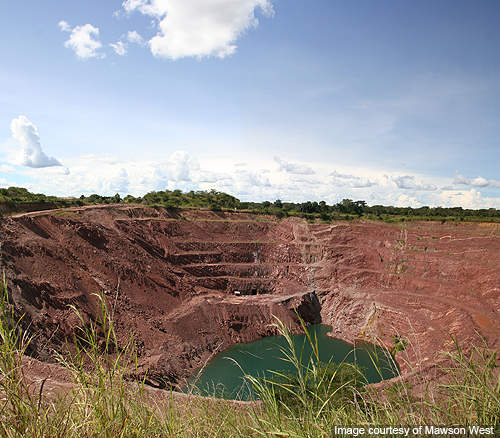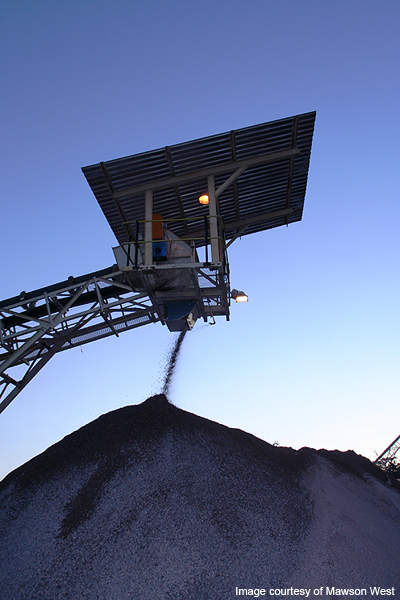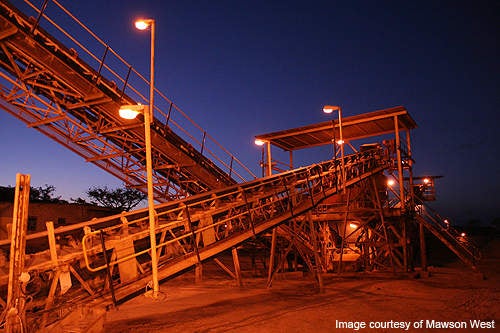The Kapulo copper mine is located in the Democratic Republic of Congo, approximately 135km north east of the Dikulushi mine, an operating mine of Mawson West.
Mawson West acquired the Kapulo mine from Anvil Mining in May 2010. It owns 90% of the project. The remaining 10% is held by the Dikulushi-Kapulo Community Foundation Non-Profit Organisation.
The mine combines three deposits namely Shaba, Safari North and Safari South. A positive feasibility study for the project was announced in July 2011. The mine is expected to produce approximately 15,800t Cu and 78,000oz Ag annually for 7.5 years of open cut mine life.
Construction began in the third quarter of 2011 and carried out for a 17-month period. Mining began in the third quarter of 2012.
The project incurred a capital expenditure of $90m that was funded entirely by Mawson West.
Copper reserves at Kapulo mine
The proven and probable reserves, estimated only for the open cut part of the Shaba deposit, amount to 3.6 million tonnes (Mt) graded at 3.6% Cu and 128,000t in-situ Cu.
The total measured and indicated resources at Shaba, Safari North and Safari South amount to 6Mt graded at 3.5% Cu and 209,600t in-situ Cu metal. The net inferred resources of the three deposits together stand at 2.4Mt graded at 2.1% Cu.
Mine geology
The deposit lies along the eastern flank of the Katanga sedimentary basin north of the main copper belt in the Kundelungu Plateau zone. Towards the west, the area is characterised by large granite, concentrated a billion years before the sedimentary rocks.
Shaba and Safari are the two outlined ore zones at the deposit. Both ore structures measure 20m in width and 200m in length, and are hosted at zones where the fault bends and trends north by north-west, in contrast to its north-north-east orientation.
The Shaba ore body has a down-dip and extends up to 370m in depth. The Safari deposit diminishes and narrows below 100m of depth.
Kapulo mine mineralisation and ore zones
Mineralisation occurs primarily within a fault bound tabular structure of grey-black sandstone and shale with large amounts of granite-derived clasts.
A 60km-long, poorly mineralised fault termed as the Kapulo fault separates the Shaba and Safari ore zones. The ore bodies contain broad zones of clay alteration on the surface.
They host large amounts of copper carbonates and oxides, including cuprite. The oxidised zone extends downwards into the main areas of mineralisation that is dominated by copper and iron sulphides, including bornite and chalcopyrite.
It also occasionally occurs in greywacke and granite as breccias cements and veinlet stockworks.
Large coarse-grained granite forms the direct footwall to mineralisation. A thick complex of clean quartz sandstones is separated from a sliver of associated carbonaceous, polylithic, laminated greywacke by a single strand of clean quartz sandstones. The upper strand of the fault outlines a knife-edge boundary of the mineralisation.
Mining
The deposit is mined using standard open pit methods including drilling and blasting and selective mining exploitation methods.
Mining equipment includes 65t to 100t back hoe excavators. Haul trucks of between 40t and 50t capacity are used for transportation.
The processing plant operates at a nameplate capacity of 0.385Mtpa of oxide material or 0.5Mtpa of sulphide material.
Copper concentrate is produced using a primary jaw crusher, a secondary cone crusher, ball milling and conventional flotation.
This is followed by ball milling, rougher / cleaner flotation and filtration. The commissioning of first ball mill took place in November 2014.
The concentrate is transported in 1t to 2t bulka bags for sale to smelters or directly to commercial metal companies. The processing plant was commissioned in the fourth quarter of 2014, while commercial production began in July 2015.







